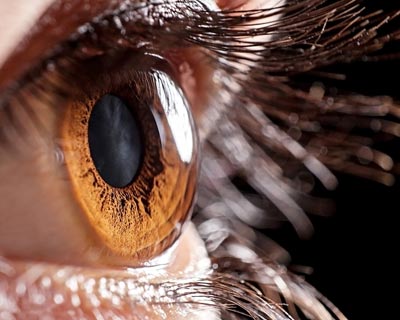People over the age of 40 are all too familiar with a common and frustrating vision problem. Wish your arms were longer so you could hold a menu far enough away to read it? Struggling to see the label on a prescription bottle? These are some of the hallmarks of presbyopia, or “aging eye.”
Presbyopia happens to everyone eventually after age 40. When we are young, the lens inside our eyes is flexible and can change shape easily to help us focus. But as we age, the lens becomes thicker and less flexible, making close vision blurry.
Reading Glasses: A Simple Fix
Reading glasses are by far the easiest and most widespread option for dealing with presbyopia. Depending on your eyes, you may need prescription reading glasses or bifocal-type lenses in order to help with close work. For those who do not need glasses for distance, over-the-counter “readers” can be purchased relatively inexpensively at supermarkets and drug stores, among other places. They work simply by magnifying the image, making it easier to see small type or close objects.
In most cases, reading glasses are very effective in correcting presbyopic sight. However, many people find that constantly removing and replacing their readers (or losing them) throughout the day is inconvenient and annoying. And if you have another refractive error, such as astigmatism, relying solely on reading glasses won’t make your vision as clear as you’d like.
New Option: Corneal Inlays
 For people fed up with keeping track of their reading glasses, newer options called corneal inlays are changing how presbyopia is treated. Using a laser, ophthalmologists create a tiny hole in the cornea and implant these devices to affect how light focuses in the eye.
For people fed up with keeping track of their reading glasses, newer options called corneal inlays are changing how presbyopia is treated. Using a laser, ophthalmologists create a tiny hole in the cornea and implant these devices to affect how light focuses in the eye.
While these advances in treating presbyopia are exciting, ophthalmologists caution that it’s too early to know how well these implants will perform over the long term.
“Corneal inlays do show promise, but it’s still early since their adoption,” says Elizabeth Yeu, MD, an ophthalmologist in Norfolk, Virginia. “We want to see how well inlay-corrected vision lasts over the longer term, and watch for any other problems that might occur down the road.”
Cost may be another factor in how enthusiastically people take to corneal inlays. Because they are an elective procedure, insurance probably won’t cover the cost.
One thing is certain: for adults unhappy with their blurry vision, the future of presbyopia treatment can’t come soon enough.